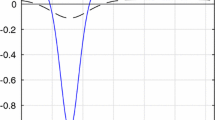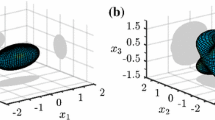Summary.
In this paper we describe and analyse a class of spectral methods, based on spherical polynomial approximation, for second-kind weakly singular boundary integral equations arising from the Helmholtz equation on smooth closed 3D surfaces diffeomorphic to the sphere. Our methods are fully discrete Galerkin methods, based on the application of special quadrature rules for computing the outer and inner integrals arising in the Galerkin matrix entries. For the outer integrals we use, for example, product-Gauss rules. For the inner integrals, a variant of the classical product integration procedure is employed to remove the singularity arising in the kernel. The key to the analysis is a recent result of Sloan and Womersley on the norm of discrete orthogonal projection operators on the sphere. We prove that our methods are stable for continuous data and superalgebraically convergent for smooth data. Our theory includes as a special case a method closely related to one of those proposed by Wienert (1990) for the fast computation of direct and inverse acoustic scattering in 3D.
Similar content being viewed by others
Author information
Authors and Affiliations
Additional information
Received May 29, 2000 / Revised version received March 26, 2001/ Published online December 18, 2001
Rights and permissions
About this article
Cite this article
Graham, I., Sloan, I. Fully discrete spectral boundary integral methods for Helmholtz problems on smooth closed surfaces in ${\mathbb R}^3$. Numer. Math. 92, 289–323 (2002). https://doi.org/10.1007/s002110100343
Issue Date:
DOI: https://doi.org/10.1007/s002110100343




